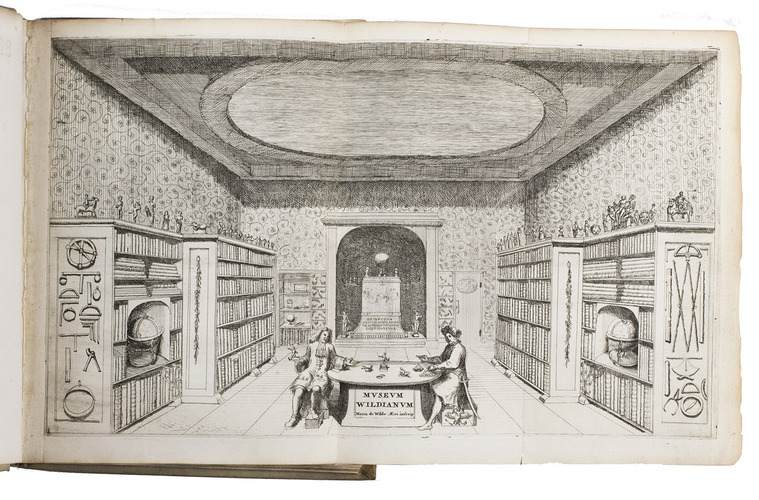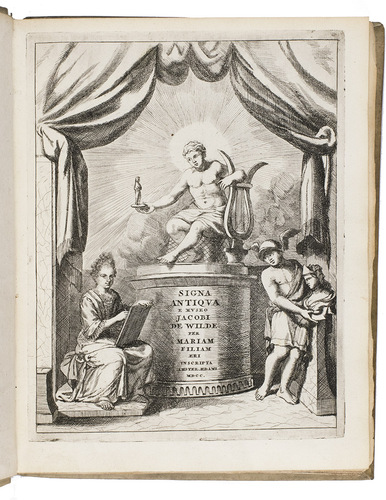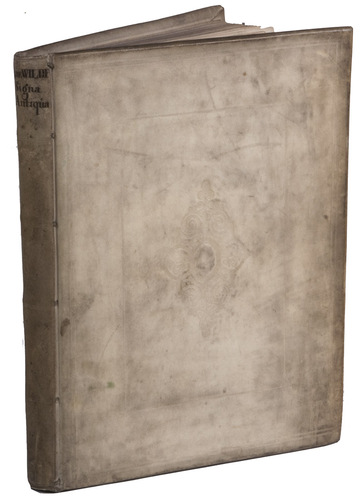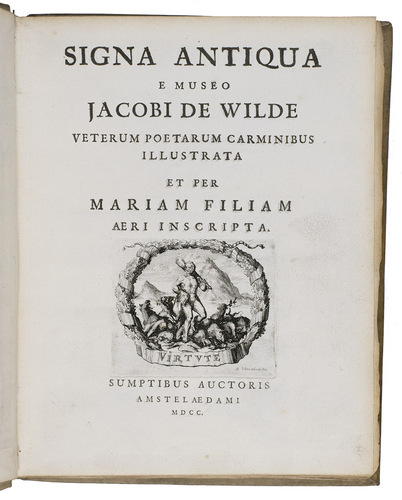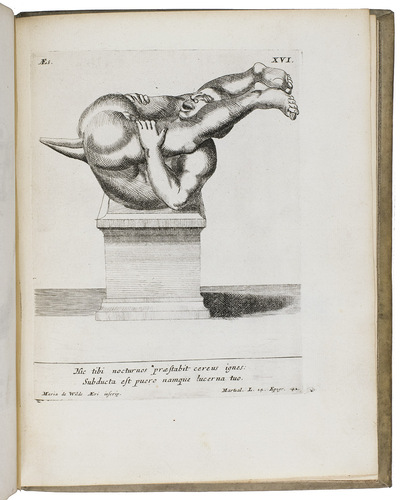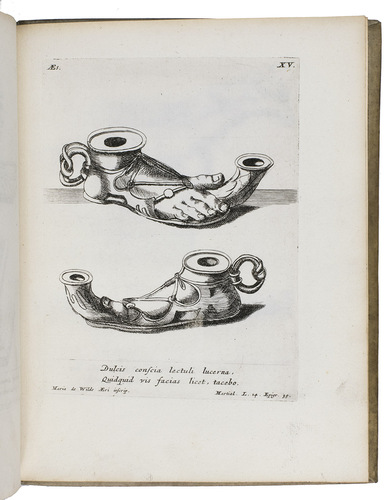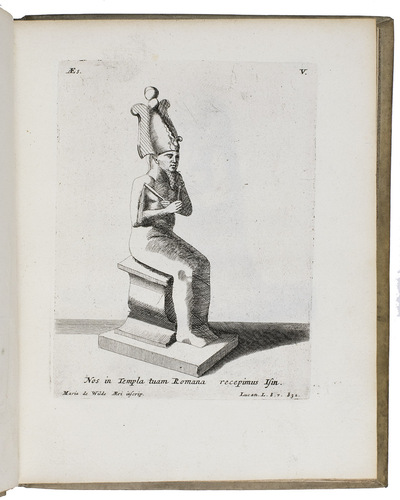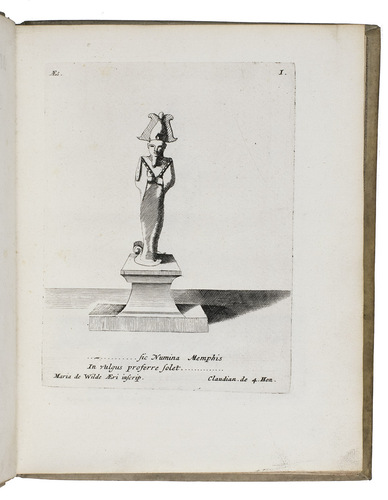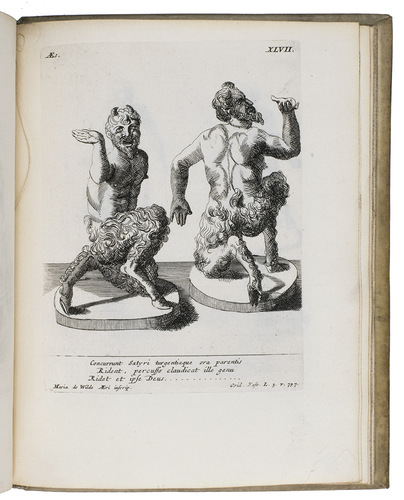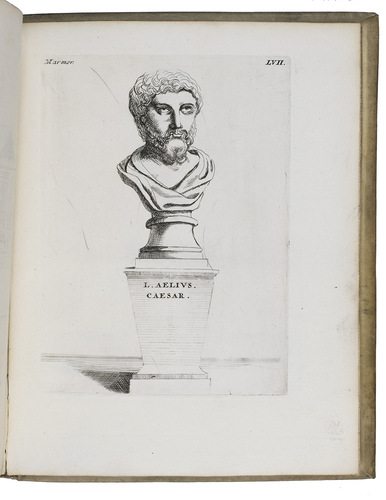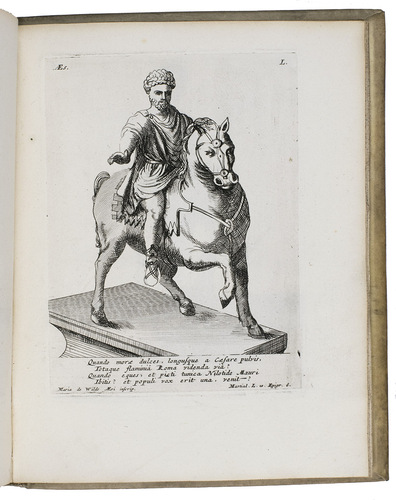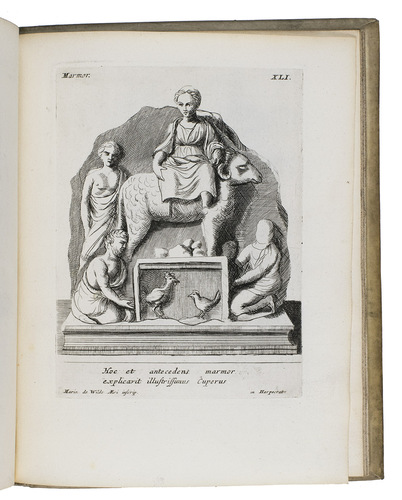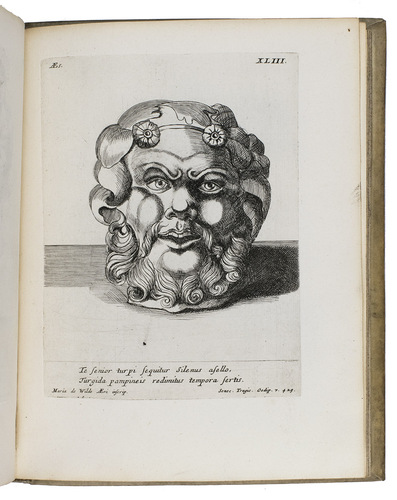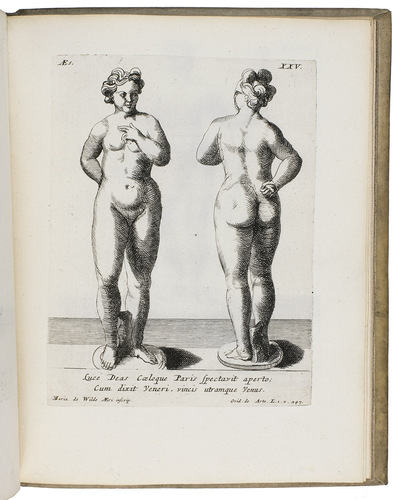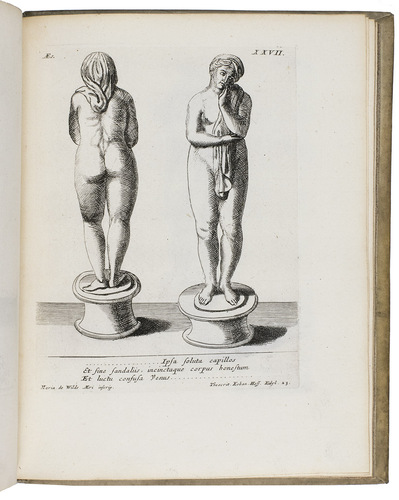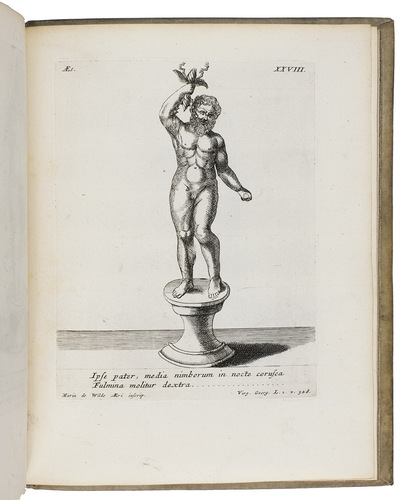WILDE, Jacob and Maria de.
Signa antiqua e museo Jacobi De Wilde veterum poetarum carminibus illustrata et per Marian filiam aeri inscripta.
Amsterdam, Maria de Wilde, 1700. 4to. With an engraved title-page, an engraved vignette depicting "virtute", 1 large folding plate showing the interior of "Museum Wildianum", a full-page engraved portrait of Maria de Wilde, decorated initials in the text and 60 numbered engraved plates by Maria de Wilde. Contemporary blind-stamped vellum, sewn on 4 supports and laced through the joints, with the manuscript title and author at the head of the spine, red and blue sprinkled edges. [1], [1 blank], [11], [1 blank] pp. and 60 numbered engraved plates.
€ 17,500
First and only edition of an attractive display of the statues of the Museum Wildeanum, once housed on the Keizersgracht in Amsterdam. The Dutch tax collector Jacob de Wilde (1645-1721) began the collection, containing gems, coins, scientific instruments and statues. "This attractive account of a Dutch cabinet of the late seventeenth century is as much a eulogy of Maria de Wilde's gifts as an engraver as of her father's museum" (Grinke). The 60 plates by Maria de Wilde (1682-1729) show the ancient Egyptian, Greek and Roman statues in the museum, including Egyptian figures of Isis, Horus, etc., some of which are now believed to be Renaissance copies of antique originals. The 6 text leaves include a brief introduction and several laudatory poems directed at Maria de Wilde and her engravings. The collection drew some important visitors, including the Russian tsar Peter the Great in 1697. His visit is illustrated on the engraved folding plate, where he can be identified by the double-headed eagle at his feet, an element of the Russian coat of arms, sitting in the museum at a table accompanied by Jacob. After De Wilde's death the collection probably dispersed. The tsar acquired part of it for his "Kunstkamera", the first museum in Russia, which was completed in 1727. A catalogue of the gems and coins of the museum was published in 1703, entitled Gemmae selectae antiquae e museo Jacobi de Wilde.
From the library of the prominent Dutch professor of civil and notarial law Adriaan Pitlo (1901-1987) and from the collection of the renowned Dutch book historian and professor of Dutch literature, linguistics, and book history Piet J. Buijnsters and his wife, the celebrated art historian Leontine M.A. Buijnsters-Smets.
With the green and white bookplate of "Collectie Buijnsters-Smets" on the inside of the front board and with the black and white bookplate of "A. Pitlo. Plus est en vous" on the verso of the (now loose) front paste-down. The binding is slightly browned and the paste-downs have come loose, revealing the sowing supports. Internally fine and clean. Overall in very good condition. A beautiful copy of an art historical work showing a late 17th-century Dutch cabinet, with a notable provenance. Grinke 61; Murray I, p. 38 & III, p. 272; STCN 842380264; Tavernier, Russia and the Low Countries: an international bibliography 3178.
Related Subjects:
















